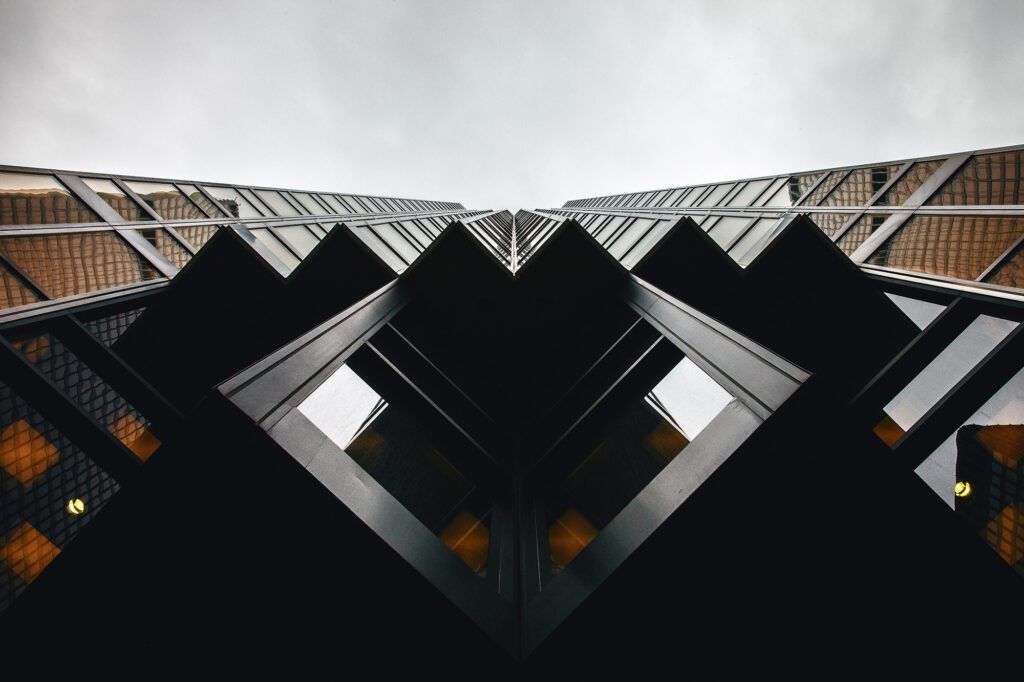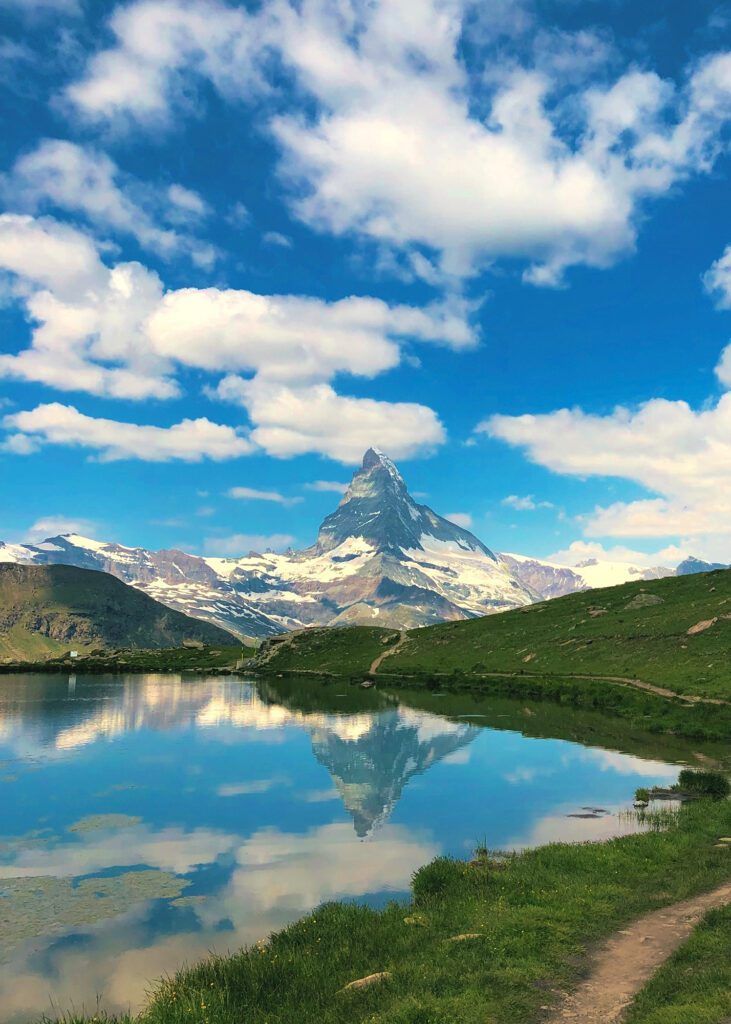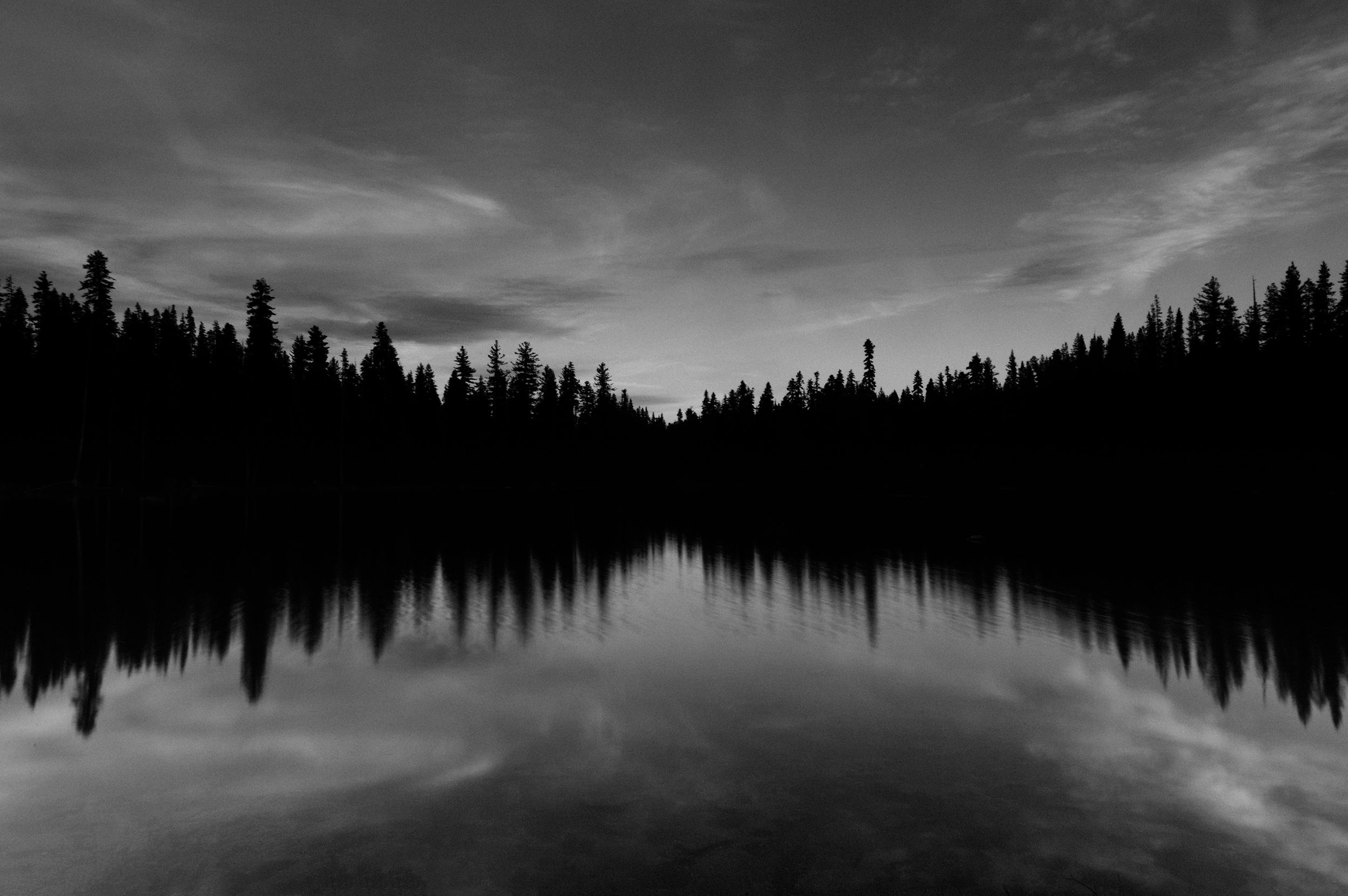Symmetry is defined in the dictionary as, ‘the quality of having parts that match each other, especially in a way that is attractive, or similarity of shape or contents’. By its very description, it’s obvious that symmetry can be used to produce beautiful images.
In this guide, I’m going to look at why symmetry is important and give you the tools you’ll need to incorporate it into your photography.
Here’s what we’ll cover:
- Why use symmetry?
- What gear will you need?
- The most common types of symmetry.
- Ideas for experimenting with symmetry.
- A note on dynamic symmetry.
Recommended Reading: If you’d like to improve your composition skills for better images, grab a copy of Photzy’s best-selling premium guide, Advanced Composition.
Why Use Symmetry?

Once you start to look for it, symmetry can be found in all sorts of unexpected places. This photo illustrates the importance of looking at things from a different angle! Photograph by Justin Main
Symmetrical photographs are always an easy way to make an image attractive to a viewer’s eye. A symmetrical shot is easy to look at and appears visually perfect – something that humans are undoubtedly drawn to. Symmetrical shots are also calming to look at and are relatively easy to conjure up. Symmetry encourages photographers to work with leading lines, helping to add depth to an image and making it stand out more.
What Gear Will You Need?
You don’t need expensive equipment to shoot symmetrical images, but there are a couple of tools that will make life easier. You can use any camera but you will need a wide-angle lens to give you the best opportunities for symmetry. Don’t go too wide, or you run the risk of vignetting and distortion. I’d recommend around a 24mm focal length (or equivalent if you’re using a crop frame sensor).
A tripod is absolutely essential for symmetrical images – you need to have your horizons and lines straight. Along the same line, a spirit level that you can attach to your camera will help you make sure that your photos are balanced on all levels. A lot of tripods have them built-in and some cameras also have a variety of guidelines built-in for a similar purpose. However you achieve it, what I’m stressing here is the importance of keeping things straight and level!
Symmetrical shots are also calming to look at and are relatively easy to conjure up.
I would also recommend popping a neutral density filter in your camera bag, particularly if you’re going to be working with landscapes and outside – it will give you more options with your exposure. Finally, I would recommend a remote to help you take photographs without risking any camera shake. Modern cameras often allow you to control your camera through an app on your smartphone but there are plenty of small camera remotes available on the market.
The Most Common Types of Symmetry

Reflectional symmetry is instantly recognizable in this photograph. Photograph by Andreas Hobi
Reflectional Symmetry

A spiral staircase provides a perfect example of radial symmetry, with elements radiating out from a central point in a circle. Photograph by Tine Ivanič
Reflectional symmetry is probably the most well-known type of symmetry and refers to photos where one side of the composition is the exact mirror image of the other. This means that it’s always going to involve some kind of reflection, such as a lake, mirror, or window. Reflectional symmetry most often makes use of horizontal symmetry, where the reflection occurs horizontally at the midpoint of your photo, such as mountains reflected in the lake in front of them. Of course, you can also use vertical symmetry – for example, this works well if you’re doing a mirror reflection with a tall mirrored building/skyscraper. You can experiment with the angles you use, as long as you remember that you need to mirror your scene exactly to create a symmetrical image.
Radial Symmetry

The repetition of these church pews shows an example of translational symmetry, alongside the reflectional symmetry provided by the reflection of the pews on the stone floor. Photograph by Josh Applegate
Also known as rotational symmetry or circular symmetry, this refers to elements in an image that radiate out from a central point in a circle. The symmetry uses radial balance in this way to create an even pattern, add depth to an image and create the feeling of visual movement. Radial symmetry can be found anywhere there’s something circular. Common examples include bicycle wheels, hay bales, or ripples in water. Or try something more creative – shoot a circular staircase from below, photograph the blades of a windmill or create your spherical shapes by cutting oranges or grapefruits in half.
Translational Symmetry
This type of symmetry refers to the repetition of the same object in a straight line, where the orientation and the position of the subject don’t change. A classic example of this is telegraph poles or electricity pylons, which will remain identical and repeat along the same plane for large distances. But you can create translational symmetry quite easily yourself – line up chairs in a row, use church pews, or photograph tiles and bricks (to give a few examples). You can also play around with this sort of symmetry to create glide reflection symmetry where a single shape is repeated multiple times but doesn’t need to be on the same plane (the classic example here is of footsteps in the sand).
Ideas for Experimenting With Symmetry
I would recommend starting with simpler symmetrical ideas so that you can get a solid grounding in creating photographic balance and symmetry. Vertical and horizontal symmetry lines are the easiest to look for but the more you practice (as with all photographic techniques!), the more you’ll start to see symmetrical opportunities – including those that are a little out of the ordinary!
If you’re looking for places to start, here are a few ideas to get going with:
- Architectural symmetry – Big cities offer a huge choice of reflective surfaces to create symmetry with. The modern trend for glass-fronted buildings offers a host of opportunities to use their reflective surfaces as a giant mirror. Try capturing the street in front of the building as a symmetrical reflection or look for colorful objects or vehicles to introduce a simple point of focus.
- Use people – Of course, humans aren’t 100% symmetrical, but our general shape lends itself well to experimenting with a vertical symmetry. A simple placement of a person in the middle of a landscape, for instance, can add balance to the two sides of the shot. You could also experiment with self-portraiture and use a mirror for reflective symmetry. This means that you can take a photo from any angle and, as long as the reflection in the mirror is visible, you’ll create symmetry.
- Symmetry in nature – If you can go outside, the chances are that you can find some symmetry! Of course, the obvious and easiest way to create symmetry is to use a body of water for reflective symmetry. But you can also work with similar-looking trees, for example, to make them look as if they’re a mirror image of each other. The outside world is also a great place to experiment with translational and glide reflection symmetry.

Symmetry can be found in all sorts of unusual places, but sometimes nature provides it free of charge! Photograph by Meiying Ng
A Note on Dynamic Symmetry
You might come across the term ‘dynamic symmetry’ in your photographic travels, so I thought I’d include a brief note about it and what it actually is. Dynamic symmetry is quite different from the standard types of symmetry I’ve talked about so far. It involves arranging elements in the frame using a dynamic symmetry grid – a series of lines that dissect the rectangular shape of your frame. It’s widely used by painters and can be transferred to photography. Dynamic symmetry is slightly more complicated than the other types of symmetry we’ve discussed – it’s harmonious to look at, but requires a complex framework. Somewhat bizarrely, you may think, photographer Henri Cartier-Bresson was known for using dynamic symmetry. And this was despite being best known for ‘The Decisive Moment’, where he used fast reflexes and precise timing to capture a moment in time. What many people don’t realize is that he often set up a shot using a dynamic symmetry grid and then waited for the action to arrive in the right place! Dynamic symmetry in photography requires a lot of precise planning and so is usually better suited to static photography such as interiors or still lifes.
Recommended Reading: If you’d like to improve your composition skills for better images, grab a copy of Photzy’s best-selling premium guide, Advanced Composition.
Conclusion

The benefits of learning about symmetry are huge, particularly for those starting in their photographic journey. Symmetrical photography teaches us how to add balance to an image and create shots that are visually pleasing to a viewer’s eye. It’s a simple way to add more depth and clarity to your work. And, like all photographic techniques, it’s something that you can use as and when you feel like it – sometimes the unsymmetrical is far more interesting!
Self-Check Quiz:
- What is the definition of symmetry?
- Why is a spirit level an essential piece of kit?
- What is radial symmetry?
- What’s the difference between translational and glide reflection symmetry?
- Can you summarize dynamic symmetry in a short sentence?














